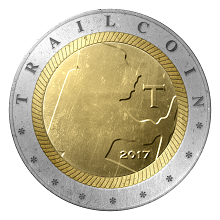Wild peas can be found in almost any place worldwide.
How they look varies from place to place, as many species exist.
The beach pea (Lathyrus japonicus) also known as sea pea or sea vetchling, is native to Europe, Asia, North America and South America. With such a wide distribution it's a definitely a species worth knowing. The genus Lathyrus consists of 160+ species give or take, so if this species doesn't grow nearby maybe another similar one does. Beach peas tend to grow in a sandy environment hence their name, and below is a typical biome you can find them in: a sandy lakeshore.

You can identify this plant by looking for the round, opposite leaves, pea-like flowers that are deep purple and have multiples per raceme, and unmistakable pea pods when the plant is fruiting.

So are they edible? All I can say is that I've eaten a handful of them raw and am still here writing to tell about it. Others have eaten significantly more and also remain. My research tells me that native peoples have used this plant as a food, though other species are known to cause a condition called Lathyrism which is caused by the ingestion of Oxalyldiaminopropionic acid, a neurotransmitter mimick which can over-excite glutamate receptors in the brain leading to neurological issues. The Sweet pea most well-known, is the main culprit of this, causing issues in famine-struck areas where large quantities of it are consumed.
Bon appetit?

Foragers have a natural skepticism for legumes because eaten raw, some can be dangerous. However in doing lots of research I have found this very good article by author Hank Shaw about Lathryus species used as food. Personally if I came across these again, I would try cooking them in a pot of water over the fire and then draining the water which may have dissolved any toxins. That being said, this is one species that has a long history of human use, from almost all parts of the globe. Check it out next time you're at the beach and see a suspiciously pea-looking plant growing nearby.

Hello @seedvault,
Congratulations! Your post has been chosen by the communities of SteemTrail as one of our top picks today.
Also, as a selection for being a top pick today, you have been awarded a TRAIL token for your participation on our innovative platform...STEEM.
Please visit SteemTrail to get instructions on how to claim your TRAIL token today.
If you wish to not receive comments from SteemTrail, please reply with "Stop" to opt out.
Happy TRAIL!

Upvoted by @foraging-trail
here and here. Join us In the Foraging-Trail and let's discuss Foraging Related TopicsThank you for following and upvoting @foraging-trail You can find out more about the Steemit Foraging community and guidelines for being upvoted by the @foraging-trail
great post
Legumes and the peas take some real work to sort out, I think. There are so many claims about some being good and others not being OK to eat, like the Sweet Pea (Lathyrus odoratus). But deeper research pulls up contradictions. And there is such a difference between eating a meal or two and relying on that plant for a major part of a person's food.
But there are so many legumes that it's hard to make generalizations, too. It's incredible how diverse they are. Your post sure gives me some food for thought about working more with some legumes. Right now, the most common legumes I eat are Redbud flowers (Cercis spp.) and Black Locust (Robinia pseudoacacia) flowers. You've given me some food for thought -- so thanks!
Well thank you for the learning experience, you're really a wealth of knowledge! I hope one day I can be as learned, but it's a journey to get there... one thing is for sure, legumes are great plants that can even be the size of trees like you mentioned! I will have to make a post about them soon, because I've enjoyed eating those (eastern redbud) flowers as well.. they're delicious. Thanks again for your informative comment posts, which are a very welcome addendum to my articles :)
You're welcome. I've been impressed with your posts. Especially because it's clear that you are really using these plants, not just copying information. There is more than any of us can learn in one lifetime about all the great things that wild plants can offer us!
It would be fun to do a Redbud Day, as a joint effort. I've got plenty of photos to use for a Redbud post any time. And I've chatted with @papa-pepper, who wants to do a Redbud post when his trees get their flowers down in Arkansas (it should be soon). If you want to join in, with a coordinated post of your own, that would be nice.
Reminds me of my childhood munching on tiny Vicia sativa pea pods!
I'm researching wild food plants in Brazil, give me a follow if you're interested.